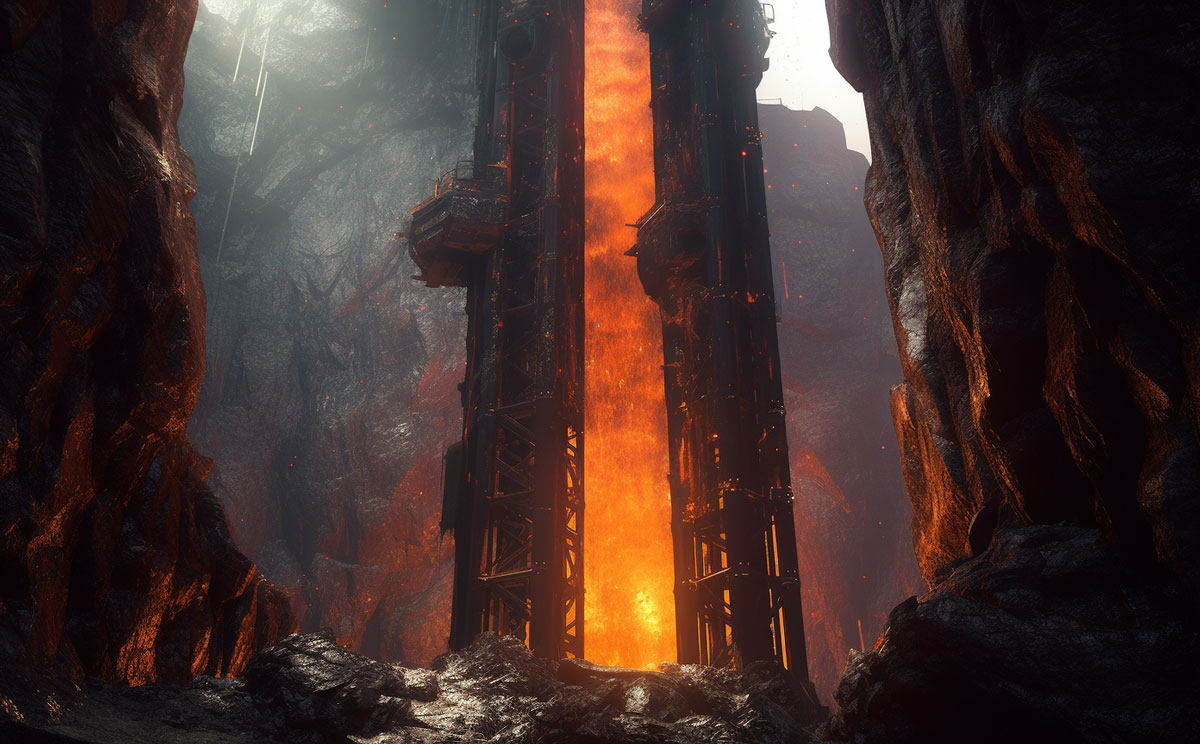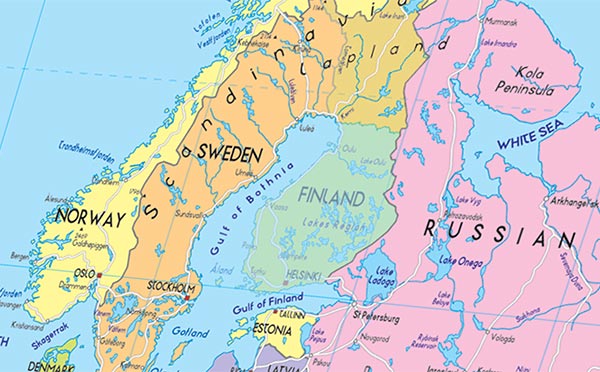What Do Creationists Really Believe?
 Creationism is not one set of beliefs - it is a battleground of dramatically conflicting world views.
Creationism is not one set of beliefs - it is a battleground of dramatically conflicting world views.
Skeptoid Podcast #82
Filed under Natural History, Religion  
 by Brian Dunning
January 8, 2008 | Old Earth Creationism | Geology | Biology | Theistic Evolution:
Evolution by natural processes is the tool God used | Yes | Yes | Evolutionary Creationism:
Adam and Eve were the first spiritually aware humans | Yes | Yes | Progressive Creationism:
Humans were a special creation event | Yes | Most | Day-Age Creationism:
Six days of creation were six geological epochs | Yes | Some | Gap Creationism:
4.5 billion year gap between Genesis 1:1 and 1:2 | Yes | Some | | Young Earth Creationism | Geology | Biology | Omphalism:
Earth was created with the appearance of age and of evolution | Yes | Yes | Young Earth Fundamentalism:
Invented versions of all natural sciences to explain Earth's age as 6,000 years | No | No | | If you've listened to the news at all within the last few years, you know that there's one topic which is always in the headlines. It's more lasting than terrorism, more pervasive than politics, and more personal than global warming. It's the war over religion; specifically, having religion taught as scientific fact. Replacing science with creationism. Whether it's Tennessee v. Scopes in 1925 or Kitzmiller v. Dover in 2005, religion versus science is always front and center.
Watching the news you've seen the $27 million Creation Museum in Kentucky, the largest and newest of the several museums throughout the United States depicting Biblical literalism as an alternative view of natural history. Dioramas show early farmers using small dinosaurs as beasts of burden. Dramatic displays show how Noah's flood created the Grand Canyon and all major geological features in a few days a few thousand years ago, and even give insight into how Noah kept all the dinosaur species on board his 600-foot ark. Most reasonable people are shocked by these flagrant attacks against intelligence. Does this mean that everyone who calls himself a creationist is certifiably insane?
As we see in so many aspects of our culture, it's usually the loudest and most outrageous fringe minority that makes the most noise and gets the most headlines. Rest assured that most creationists do not believe that Jesus rode around on a saddled Triceratops. There are, in fact, a number of different types of creationism. These variations conflict with one another and are mutually exclusive, and they are at varying odds with science.
The movement called Intelligent Design is not a type of creationism, or indeed any particular set of beliefs, so it will not be included in this discussion of the various types of creationism. Intelligent Design is a blanket concept intended to show that the scientific method alone is not adequate to explain the natural world, and that a divine creator is a required component for any complete explanation of nature. All types of creationists rally under the banner of Intelligent Design with the explicit goal of getting a foot in the door to force their particular belief system to be taught as fact in public schools.
These types of creationists fall into two main classifications: Young Earth Creationists, who believe that the Earth is between six and ten thousand years old; and Old Earth Creationists, who generally accept the scientific measurement of the Earth's age at 4.5 billion years old. Within these classifications are other irreconcilable differences, which we'll now go through one by one.
Let's start with the forms of Old Earth Creationism. I'm going to describe five basic types. Philosophers and adherents will probably quarrel with my chosen five, as there are others, and there are undoubted overlaps between these, and many believers combine aspects from two or more. But let's stick with these five as being representative. Here they are, in order of how well they reconcile with science, starting with the best:
- Theistic Evolution. This is the Catholic Pope's officially stated position, and it's embraced by many real scientists of faith. Theistic evolution accepts both the geologic and biologic records, including modern evolutionary synthesis, and posits that these are simply the tools God chose to create the natural world. Theistic evolution allows and embraces scientific research and permits the acceptance of new information.
- Evolutionary Creationism also accepts the geologic and biologic records, and makes its creationist distinction in that there were a literal Adam and Eve who were simply the first spiritually aware humans, though they came into being in the same way as all early humans.
- Progressive Creationism goes one step farther. Progressive Creationism accepts the geologic record, and much of the prehistoric biologic record, including the true age of dinosaurs and other early lifeforms, but believes that the creation of humans and perhaps other modern animals was a special creationism event as literally depicted in Genesis. Thus, there can be no biological link between humans and early hominids from the fossil record.
- Day-Age Creationism is the belief that the six days of creation were really six geological epochs. Usually some effort is made to reconcile specific days in Genesis to specific epochs in Earth history, but since things didn't really all happen separately and consecutively like in Genesis, such efforts are generally somewhat ham-handed. But at least they're trying. Day-Age Creationism is what Jehovah's Witnesses advocate in their Watchtower pamphlets.
- Gap Creationism is about as far as the Old Earth model can be stretched. This model attempts to unify the true age of the Earth as measured by science with the literal Biblical account. Jimmy Swaggart advocates this model. Gap Creationism states that the first verse of the Bible, God created the heavens and the Earth, was followed by a "gap" of 4.5 billion years, during which time not much happened. And then, the literal creation of Genesis took place in six days about six to ten thousand years ago. Necessarily, this model has to abandon evolution completely, although it adheres to proper geology.
Now we move to the other half of creationist models, the Young Earth Creationism. Here we are forced to completely abandon reason and rationality. There are really only two main camps, and as you can see, they are completely at odds with one another, agreeing only on a single point: That the Earth did not exist ten thousand years ago. Let's now examine these two types of Young Earth Creationism, and once again we'll take them in order of how closely they adhere to real science:
- Omphalism. This is named after the 1857 book Omphalos, published two years before Darwin's Origin of Species, which explained that the fossil record was God's way of making the Earth appear to be old. Omphalos is Greek for navel, and the Omphalists believe that Adam and Eve were created with navels, thus having the appearance of being created through normal evolutionary biology. Adherents to Omphalism fully accept every scientific measurement of the age of the Earth and every discovery of modern biology, with the important exception that all such discoveries are wrong: God only wanted to make us think that the Earth is 4.5 billion years old, and that life evolved from lower forms. A true scientist doing real research can be an Omphalist. He will arrive at the correct conclusions, though he will believe that his measurement is merely what God wants him to see.
- Modern Young Earth Fundamentalism. Here is where the train jumps completely off the tracks. Modern Young Earthers, for lack of a better name, are the ones behind the Creation Museum discussed earlier. They honestly believe in alternate versions of virtually every science known, throwing away every shred of modern science that doesn't point to the age of the Earth as 6,000 years. They literally believe in Adam and Eve (without navels) and all the dinosaurs on Day 1, fossilization taking only a few hundred years, and all major geologic features having been created in a few days in Noah's Flood. They reject evolution, cosmology, geology, and every science that supports them; which, by extension, eventually includes every scientific discipline. However, in their minds, they don't reject them at all; they fully embrace completely wrong, misinterpreted, misunderstood, and misrepresented versions of them. Their worldview is based absolutely on the Bible as a perfect, unerring, literal historical account. As a followup, they have invented their own versions of natural sciences that they pretend supports this view. It is not possible to be a thoroughly researched Young Earther and still retain any grasp on rationality. This is the group making the overwhelming majority of noise in the media and modern culture, but it's not clear how large of a group this really is. They have the largest and loudest web presence, with AnswersInGenesis.org and the Discovery Institute, though out of 3.2 million Ph.D.'s worldwide they've only been able to find 700 who agree with their science, according to their list maintained at DissentFromDarwin.org. This represents 2% of 1% of people with advanced academic degrees.
So as you can see, the battle is not simply between science and creation. It's really more between the various forms of creationism, and especially between the modern Young Earthers and everyone else. There are perfectly rational ways to blend what we've learned through the scientific method with divine guidance, if that's your cup of tea. There are even reasonably, or at least relatively, rational ways to accept the gist of Genesis and still maintain a grip on reality. The majority of creationists are not entirely disconnected from reason. Even people like the Jehovah's Witnesses, who are often thought of as fringe fundamentalists, make an attempt to keep their beliefs reconciled with modern science. So long as this focus is maintained, we can be reasonably assured that our educational system is not headed for the proverbial rubber room.

By Brian Dunning
Please contact us with any corrections or feedback.
Cite this article:
Dunning, B. (2008, January 8) What Do Creationists Really Believe? Skeptoid Media. https://skeptoid.com/episodes/4082
References & Further Reading Horn, S.D.S. Stephan (Editor), Pope Benedict XVI. Creation and Evolution: A Conference With Pope Benedict XVI in Castel Gandolfo. San Francisco: Ignatius Press, 2008.
Isaak, Mark. The Counter-Creationism Handbook. Berkeley and Los Angeles: University of California Press, 2007. entire book.
Myers, Paul. "The Creation 'Museum'." Pharyngula. Science Blogs, 10 Aug. 2009. Web. 10 Jan. 2010. <http://scienceblogs.com/pharyngula/2009/08/the_creation_museum_1.php>
Numbers, R. The Creationists: From Scientific Creationism to Intelligent Design. Cambridge: Harvard University Press, 2006.
Scott, Eugenie C. Evolution vs. Creationism: An Introduction. Berkeley and Los Angeles: University of California Press, 2009. entire book.
Strahler, Arthur N. Science and Earth History--The Evolution/Creation Controversy. Buffalo: Prometheus Books, 1987. entire book.
©2025 Skeptoid Media, Inc. All Rights Reserved. Rights and reuse information
|
|



Shop: Apparel, books, closeouts
Now Trending...
 Tartaria and the Mud Flood  Solving the Lead Masks of Vintem Hill  The Siberian Hell Sounds  Scalar Weapons: Tesla's Doomsday Machine?  There Is No Finland: Birth of a Conspiracy Theory  The Non-Mystery of Puma Punku  Exploring Kincaid's Cave  How to Extract Adrenochrome from Children
|




